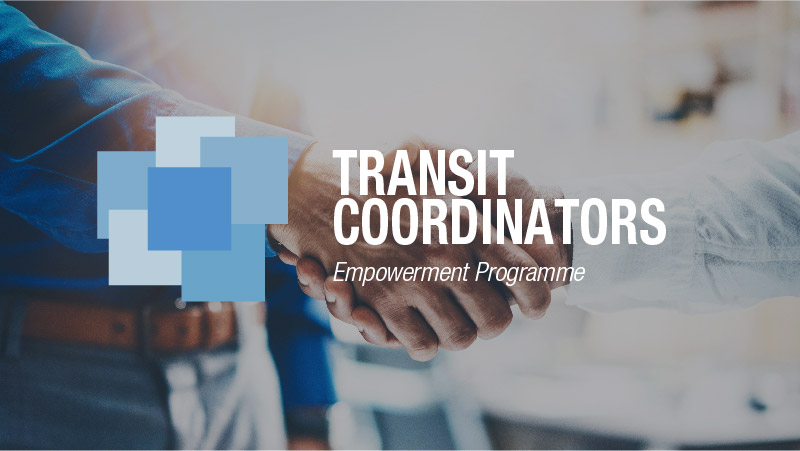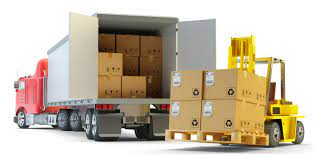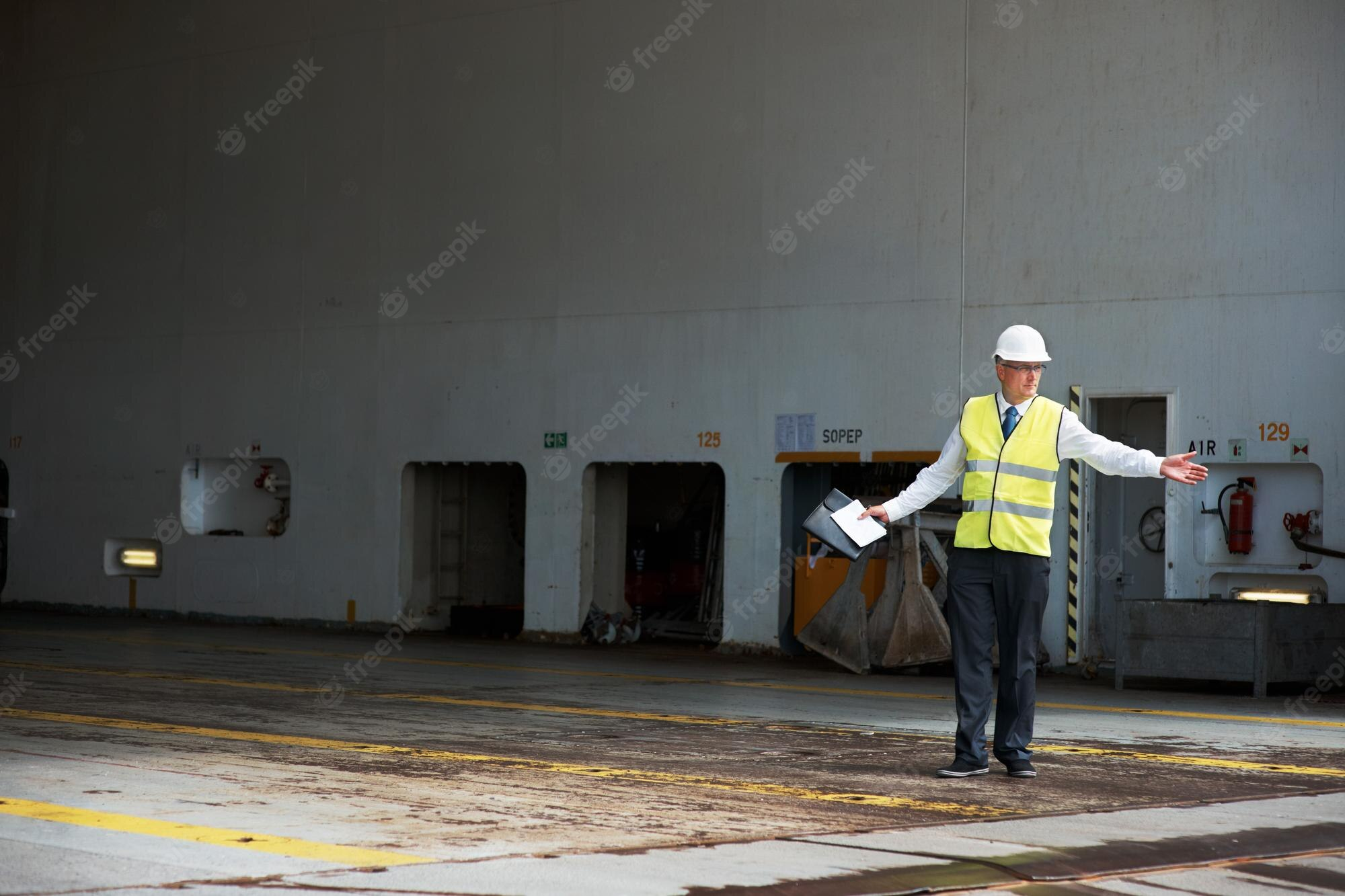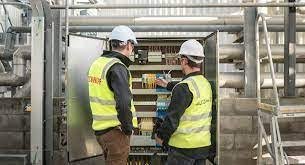Transport Coordinator (1 years diploma)
Transport Coordinator click here
Brief Job Description
Transport Cordinators are also known as Transport Controllers or Route Coordinators. Individuals in this
role are responsible for monitoring all consignments in real time, identifying and rectifying problems and
confirming that the customer has received the order.

Personal Attributes
This job requires the individual to work well with his/her team and achieve joint goals. The individual must
be able to prioritize and execute tasks within scheduled time limits. The individual should be able to
maintain high concentration levels throughout his/her shift.
Setup systems, update information and plan the operations for the day
Description
This unit is about setting up systems, updating information and planning operations for the day.
Elements and Performance Criteria
Set up computer and tracking systems for operation
To be competent, the user/individual on the job must be able to:
PC1. power up computer terminal and log in using company credentials
PC2. identify errors in the tracking system if any and have it rectified by IT team
PC3. ensure readiness of computer, GPS and all other tracking systems in the tracking grid.
Update available information

To be competent, the user/individual on the job must be able to:
PC8. update all information into the computer and tracking systems
PC4. understand status from the transport coordinator of the previous shift, what work is pending
and concerns if any.
PC5. receive any new order data, new client details, etc. from Data Entry Operator (DEO).
PC6. understand any changes in priority of existing orders from DEO
PC7. understand from the despatcher about any delays or problems in outgoing consignments
from the previous day
Plan the operations
To be competent, the user/individual on the job must be able to:
PC9. confirm inventory and labour availability with supervisor and get an estimate of throughput
time from the supervisor
PC10. ensure the availability of vehicles on time
PC11. calculate optimium utilization for containers/vehicles
PC12. co-ordinate with the loading team to load the vehicles
PC13. estimate the transport time for the consignment to reach the customer
PC14. in case of priorities/special needs, determine how much the consignment can be expedited
at a reasonable cost
PC15. coordinate with warehouse loading supervisors as per developed loading plan
PC16. prepare a realistic estimate of when the consignment would reach the client by including
some contingency time in the schedule to deal with unforeseen problems
Knowledge and Understanding (KU)
The individual on the job needs to know and understand:
KU1. types of documentation used in organization and importance of the same
KU2. risk and impact of not following defined work, safety and security procedures
KU3. records and log books to be maintained and the importance of the same
KU4. security procedures to be followed
KU5. escalation matrix for reporting identified problems
KU6. chain of command for reporting problems and status of delivery
KU7. value of items handled and implications of damage/loss of the same
KU8. knowledge of how the company deals with damage or pilferage
KU9. knowledge of transit rules and regulations.
KU10. knowledge of various clients and their requirements
KU11. implications of poor performance such as delayed pick-up, improper documentation and high
error rate
KU12. an end to end understanding of all activities that will be done
KU13. nature of the products transported and the variances in their characteristics
KU14. detailed understanding of the tracking systems
KU15. ability to accurately estimate travel time required

KU16. understanding of common problems and solutions for the same
KU17. basic computer and system skills to operate and perform minor fixes
KU18. knowledge of processes and differences in processes across clients/products
KU19. knowledge of routes and ability to reroute if required.
KU20. knowledge of controls and processes for operating computer terminal
Generic Skills (GS)
User/individual on the job needs to know how to:
GS1. ability to make note of instructions for supervisors, despatchers and the relieving transport
coordinator.
GS2. ability to develop operating procedures, improvements and create documents for internal
understanding/use
GS3. good reading skills, ability to comprehend written instructions, standard operating
procedures
GS4. read and understand documents required for all operational activities
GS5. read and understand instructions on how to use the tracking systems.
GS6. communicate well with people of all levels
GS7. communicate with client/warehouse coordinators/internal staff effectively
GS8. share experiences and provide guidance to juniors and peers
GS9. act objectively , rather than impulsively or emotionally when faced with difficult/stressful or
emotional situations
GS10. ability to make a judgment as to whether a route change is required or not.
GS11. adjust according to volume, capacity and manpower needs during peak and non-peak hours
GS12. prioritize and execute tasks within the scheduled time limits
GS13. maintain schedules and punctuality. avoid absenteeism.
GS14. be a team player and achieve joint goals
GS15. flexibility to re-assess schedule in case of delays/additional orders
GS16. adjust according to volume, capacity and manpower needs during peak and non-peak hours
GS17. understand the customer timelines and ensure that they are met.
GS18. identify trends/common causes for errors and suggest possible solutions to the manager.
GS19. handle day to day problems like delays, staffing shortage, etc.
GS20. suggest methods to streamline the tracking process.
GS21. ability to keep track of the progress of each truck in real time
GS22. ability to concentrate on task at hand and complete it without errors
Monitor status of consignments that are under way
Description
This unit is about monitoring status of consignments that are under way
Elements and Performance Criteria
Coordinate with trucking companies
To be competent, the user/individual on the job must be able to:
PC1. contact the concerned person in the trucking companies, explain needs, make new bookings
and arrange to have the new orders picked up.
PC2. follow up on existing truck bookings that have already been scheduled.
PC3. discuss any concerns regarding consignments already underway and have them addressed
PC4. liaise with transport company representatives in case of any issues/emergencies
Follow up on consignments that are underway
To be competent, the user/individual on the job must be able to:
PC5. take stock of the current status of each ongoing consignment
PC6. continuously keep track of the news to alert drivers in case of any problems or concerns
along the route
PC7. reroute the consignment if required and convey the change to the driver
PC8. continuously track all ongoing consignments and keep in touch with drivers to identify any
issues or errors.
PC9. in case of problems, contact or respond to calls from the driver of the concerned truck and
understand the issue
PC10. discuss possible solutions with the driver and agree on the corrective action to be taken.
PC11. contact local authorities and request their assistance if needed
PC12. log the issue and follow up with the driver to ensure that the transport of the consignment
has resumed
PC13. update information on the estimated delivery time of the consignment accordingly.
Knowledge and Understanding (KU)
The individual on the job needs to know and understand:
KU1. types of documentation used in organization and importance of the same
KU2. risk and impact of not following defined work, safety and security procedures
KU3. records and log books to be maintained and the importance of the same
KU4. security procedures to be followed
KU5. escalation matrix for reporting identified problems
KU6. chain of command for reporting problems and status of delivery
KU7. value of items handled and implications of damage/loss of the same
KU8. knowledge of how the company deals with damage or pilferage
KU9. knowledge of transit rules and regulations.
KU10. knowledge of various clients and their requirements
KU11. implications of poor performance such as delayed pick-up, improper documentation and high
error rate
KU12. an end to end understanding of all activities that will be done
KU13. nature of the products transported and the variances in their characteristics
KU14. detailed understanding of the tracking systems
KU15. ability to accurately estimate travel time required
KU16. understanding of common problems and solutions for the same
KU17. basic computer and system skills to operate and perform minor fixes
KU18. knowledge of processes and differences in processes across clients/products
KU19. knowledge of routes and ability to reroute if required
KU20. knowledge of controls and processes for operating computer terminal
Generic Skills (GS)
User/individual on the job needs to know how to:
GS1. ability to make note of instructions for supervisors, despatchers and the relieving transport
coordinator
GS2. ability to develop operating procedures, improvements and create documents for internal
understanding/use
GS3. good reading skills, ability to comprehend written instructions, standard operating
procedures
GS4. read and understand documents required for all operational activities
GS5. read and understand instructions on how to use the tracking systems
GS6. communicate well with people of all levels
GS7. communicate with client/warehouse coordinators/internal staff effectively
GS8. share experiences and provide guidance to juniors and peers
GS9. act objectively , rather than impulsively or emotionally when faced with difficult/stressful or
emotional situations
GS10. ability to make a judgment as to whether a route change is required or not
GS11. adjust according to volume, capacity and manpower needs during peak and non-peak hours
GS12. prioritize and execute tasks within the scheduled time limits
GS13. maintain schedules and punctuality. avoid absenteeism
GS14. be a team player and achieve joint goals
GS15. flexibility to re-assess schedule in case of delays/additional orders
GS16. adjust according to volume, capacity and manpower needs during peak and non-peak hours
GS17. understand the customer timelines and ensure that they are met
GS18. identify trends/common causes for errors and suggest possible solutions to the manager
GS19. handle day to day problems like delays, staffing shortage, etc
GS20. suggest methods to streamline the tracking process.
GS21. ability to keep track of the progress of each truck in real time
GS22. ability to concentrate on task at hand and complete it without errors
Confirm delivery is completed with client and report
Description
This unit is about confirming delivery is completed with client and reporting
Elements and Performance Criteria
Close deliveries with clients
To be competent, the user/individual on the job must be able to:
PC1. check the tracking system to verify that the truck has reached the destination
PC2. call or email client to verify that the truck has arrived with the consignment ingood condition.
PC3. complete any closing formalities that may be required at either end.
PC4. add any comments if required and close the consignment on the tracking system.
PC5. in case of delays, discrepencies etc. inform client representative
Report to management
To be competent, the user/individual on the job must be able to:
PC6. escalate to manager receipt shortages and dealer/end customer claims for timely closure
along with the necessary inventory adjustments
PC7. prepare vendor rating report with details on which transporter provided vehicles on time,
how many vehicles reached the destination on time ,etc
PC8. notify manager regarding any concerns faced during the day
PC9. provide daily report to manager regarding the condition of the routes, accidents or damage if
any, delays, inability to meet an order, etc.
PC10. after obtaining the manager’s approval, inform deo to place orders.
PC11. complete any forms as required by management.
Knowledge and Understanding (KU)
The individual on the job needs to know and understand:
KU1. types of documentation used in organization and importance of the same
KU2. risk and impact of not following defined work, safety and security procedures
KU3. records and log books to be maintained and the importance of the same
KU4. security procedures to be followed
KU5. escalation matrix for reporting identified problems
KU6. chain of command for reporting problems and status of delivery
KU7. value of items handled and implications of damage/loss of the same
KU8. knowledge of how the company deals with damage or pilferage
KU9. knowledge of transit rules and regulations
KU10. knowledge of various clients and their requirements
KU11. implications of poor performance such as delayed pick-up, improper documentation and high
error rate
KU12. an end to end understanding of all activities that will be done
KU13. nature of the products transported and the variances in their characteristics
KU14. detailed understanding of the tracking systems
KU15. ability to accurately estimate travel time required

KU16. understanding of common problems and solutions for the same
KU17. basic computer and system skills to operate and perform minor fixes
KU18. knowledge of processes and differences in processes across clients/products
KU19. knowledge of routes and ability to reroute if required.
KU20. knowledge of controls and processes for operating computer terminal
Generic Skills (GS)
User/individual on the job needs to know how to:
GS1. ability to make note of instructions for supervisors, despatchers and the relieving transport
coordinator.
GS2. ability to develop operating procedures, improvements and create documents for internal
understanding/use
GS3. good reading skills, ability to comprehend written instructions, standard operating
procedures
GS4. read and understand documents required for all operational activities
GS5. read and understand instructions on how to use the tracking systems
GS6. communicate well with people of all levels
GS7. communicate with client/warehouse coordinators/internal staff effectively
GS8. share experiences and provide guidance to juniors and peers
GS9. act objectively , rather than impulsively or emotionally when faced with difficult/stressful or
emotional situations
GS10. ability to make a judgment as to whether a route change is required or not.
GS11. adjust according to volume, capacity and manpower needs during peak and non-peak hours
GS12. prioritize and execute tasks within the scheduled time limits
GS13. maintain schedules and punctuality. avoid absenteeism.
GS14. be a team player and achieve joint goals
GS15. flexibility to re-assess schedule in case of delays/additional orders
GS16. adjust according to volume, capacity and manpower needs during peak and non-peak hours
GS17. understand the customer timelines and ensure that they are met.
GS18. identify trends/common causes for errors and suggest possible solutions to the manager
GS19. handle day to day problems like delays, staffing shortage, etc.
GS20. suggest methods to streamline the tracking process.
GS21. ability to keep track of the progress of each truck in real time.
GS22. ability to concentrate on task at hand and complete it without errors
Prepare for shift handover
Description
This unit is about preparing for shift handover
Elements and Performance Criteria
Set up computer and tracking systems for operation
To be competent, the user/individual on the job must be able to:
PC1. discuss with despatcher to understand if there is any delay and update the departure times of
consignments
PC2. take note of consignments that had recently departed as well as those already underway
PC3. note down the consignments which had any issues or which have special priorities.
PC4. update the estimated arrival times of all consignment
PC5. inform customers on the updated estimates of arrival times if necessary
Update available information
To be competent, the user/individual on the job must be able to:
PC6. clean up the work area for the next shift transport coordinator.
PC7. handover the log and any other documentation that was maintained for the shift.
PC8. briefly explain the important events and areas which require careful monitoring to the
relieving transport coordinator
Knowledge and Understanding (KU)
The individual on the job needs to know and understand:
KU1. types of documentation used in organization and importance of the same
KU2. risk and impact of not following defined work, safety and security procedures
KU3. records and log books to be maintained and the importance of the same
KU4. security procedures to be followed
KU5. escalation matrix for reporting identified problems
KU6. chain of command for reporting problems and status of delivery
KU7. value of items handled and implications of damage/loss of the same
KU8. knowledge of how the company deals with damage or pilferage
KU9. knowledge of transit rules and regulations.
KU10. knowledge of various clients and their requirements
KU11. implications of poor performance such as delayed pick-up, improper documentation and high
error rate
KU12. an end to end understanding of all activities that will be done.
KU13. nature of the products transported and the variances in their characteristics
KU14. detailed understanding of the tracking systems
KU15. ability to accurately estimate travel time required
KU16. understanding of common problems and solutions for the same
KU17. basic computer and system skills to operate and perform minor fixes
KU18. knowledge of processes and differences in processes across clients/products
KU19. knowledge of routes and ability to reroute if required.
KU20. knowledge of controls and processes for operating computer terminal
Generic Skills (GS)
User/individual on the job needs to know how to:
GS1. ability to make note of instructions for supervisors, despatchers and the relieving transport
coordinator
GS2. ability to develop operating procedures, improvements and create documents for internal
understanding/use
GS3. good reading skills, ability to comprehend written instructions, standard operating
procedures
GS4. read and understand documents required for all operational activities
GS5. read and understand instructions on how to use the tracking systems.
GS6. communicate well with people of all levels
GS7. communicate with client/warehouse coordinators/internal staff effectively
GS8. share experiences and provide guidance to juniors and peers
GS9. act objectively , rather than impulsively or emotionally when faced with difficult/stressful or
emotional situations
GS10. ability to make a judgment as to whether a route change is required or not.
GS11. adjust according to volume, capacity and manpower needs during peak and non-peak hours
GS12. prioritize and execute tasks within the scheduled time limits
GS13. maintain schedules and punctuality. avoid absenteeism
GS14. be a team player and achieve joint goals
GS15. flexibility to re-assess schedule in case of delays/additional orders
GS16. adjust according to volume, capacity and manpower needs during peak and non-peak hours
GS17. understand the customer timelines and ensure that they are met
GS18. identify trends/common causes for errors and suggest possible solutions to the manager
GS19. handle day to day problems like delays, staffing shortage, etc
GS20. suggest methods to streamline the tracking process
GS21. ability to keep track of the progress of each truck in real time
GS22. ability to concentrate on task at hand and complete it without errors
Maintain Health, Safety and security measures in coordinating transportation routes
Description
This unit is about maintaining Health, Safety and security measures in coordinating transportation routes
Elements and Performance Criteria
Identify and report all emergencies/accidents/ safety breaches
To be competent, the user/individual on the job must be able to:
PC1. in case of signs of any emergency situation or accident or breach of safety immediately
follow organizational protocol to deploy action
PC2. identify reasons for occurrence of incident
PC3. capture reasons and response/action taken into incident report/note to manager
PC4. report any deviations from standard protocol along with reasons (if any)
Inspect activity area and equipment to ensure it is in safe/working condition
To be competent, the user/individual on the job must be able to:
PC5. visually inspect the activity area and equipment for appropriate and safe condition
PC6. report any issues related to equipment and activity area to the concerned personnel or
management.
PC7. ensure all safety/emergency/medical equipment is readily accessible in case of any incident
Maintain health, safety and security protocol during all activities
To be competent, the user/individual on the job must be able to:
P8. follow Material Safery Data Sheet (MSDS) and other security procedures as per company
policy
PC9. follow all precautionary data handling procedures
PC10. maintain clean work table area
PC11. ensure data privacy and independence in all dealings
PC12. ensure ones own physical fitness is in good condition
PC13. follow all health and safety guidelines as per organizational procedures
PC14. ensure appropriate protocol is followed in case of any incident by all relevant staff
Knowledge and Understanding (KU)
The individual on the job needs to know and understand:
KU1. types of documentation used in organization and importance of the same
KU2. risk and impact of not following defined work, safety and security procedures
KU3. records and log books to be maintained and the importance of the same
KU4. security procedures to be followed
KU5. escalation matrix for reporting identified problems
KU6. chain of command for reporting problems and status of delivery
KU7. value of items handled and implications of damage/loss of the same
KU8. knowledge of how the company deals with damage or pilferage
KU9. knowledge of transit rules and regulations.
KU10. knowledge of various clients and their requirements
KU11. implications of poor performance such as delayed pick-up, improper documentation and high
error rate
KU12. an end to end understanding of all activities that will be done.
KU13. nature of the products transported and the variances in their characteristics
KU14. detailed understanding of the tracking systems
KU15. ability to accurately estimate travel time required
KU16. understanding of common problems and solutions for the same
KU17. basic computer and system skills to operate and perform minor fixes
KU18. knowledge of processes and differences in processes across clients/products
KU19. knowledge of routes and ability to reroute if required
KU20. knowledge of controls and processes for operating computer terminal
Generic Skills (GS)
User/individual on the job needs to know how to:
GS1. ability to make note of instructions for supervisors, despatchers and the relieving transport
coordinator
GS2. ability to develop operating procedures, improvements and create documents for internal
understanding/use
GS3. good reading skills, ability to comprehend written instructions, standard operating
procedures
GS4. read and understand documents required for all operational activities
GS5. read and understand instructions on how to use the tracking systems.
GS6. communicate well with people of all levels
GS7. communicate with client/warehouse coordinators/internal staff effectively
GS8. share experiences and provide guidance to juniors and peers
GS9. act objectively , rather than impulsively or emotionally when faced with difficult/stressful or
emotional situations
GS10. ability to make a judgment as to whether a route change is required or not
GS11. adjust according to volume, capacity and manpower needs during peak and non-peak hours
GS12. prioritize and execute tasks within the scheduled time limits
GS13. maintain schedules and punctuality. avoid absenteeism.
GS14. be a team player and achieve joint goals
GS15. flexibility to re-assess schedule in case of delays/additional orders
GS16. adjust according to volume, capacity and manpower needs during peak and non-peak hours
GS17. understand the customer timelines and ensure that they are met.
GS18. identify trends/common causes for errors and suggest possible solutions to the manager
GS19. handle day to day problems like delays, staffing shortage, etc.
GS20. suggest methods to streamline the tracking process.
GS21. ability to keep track of the progress of each truck in real time
GS22. ability to concentrate on task at hand and complete it without errors








